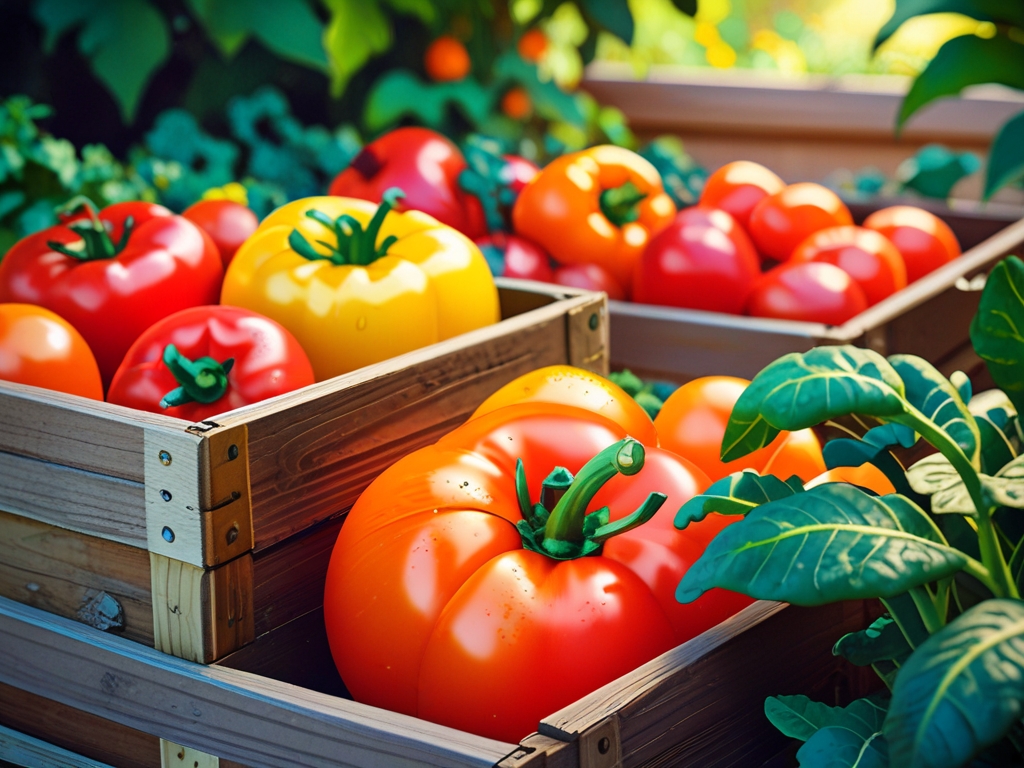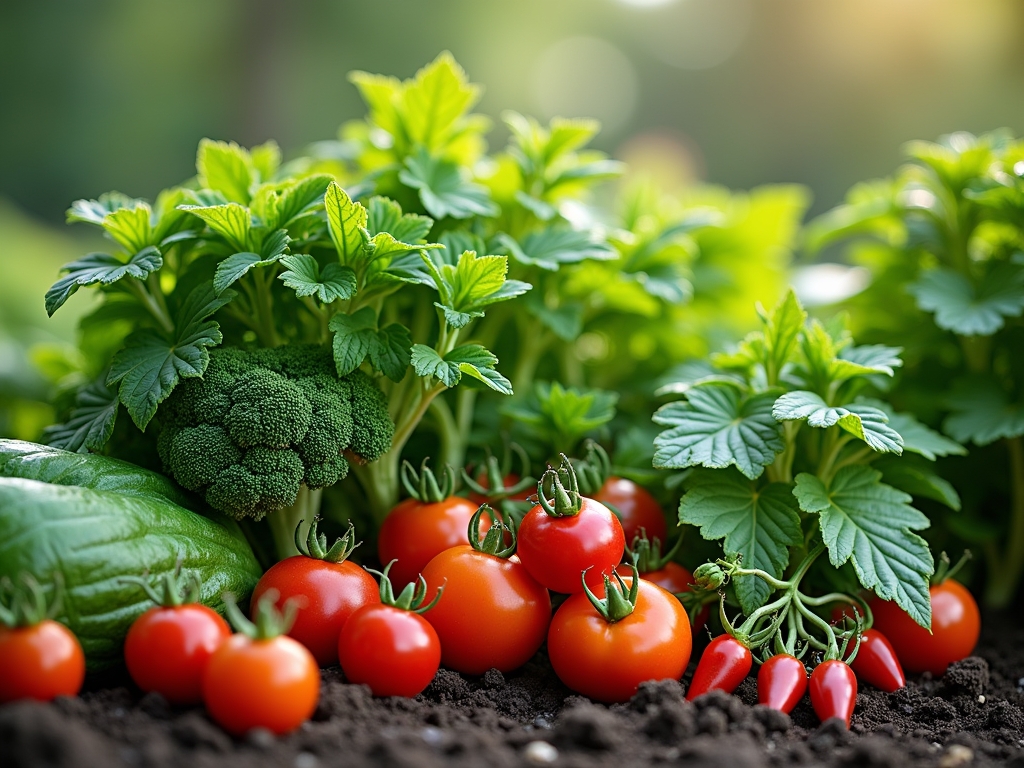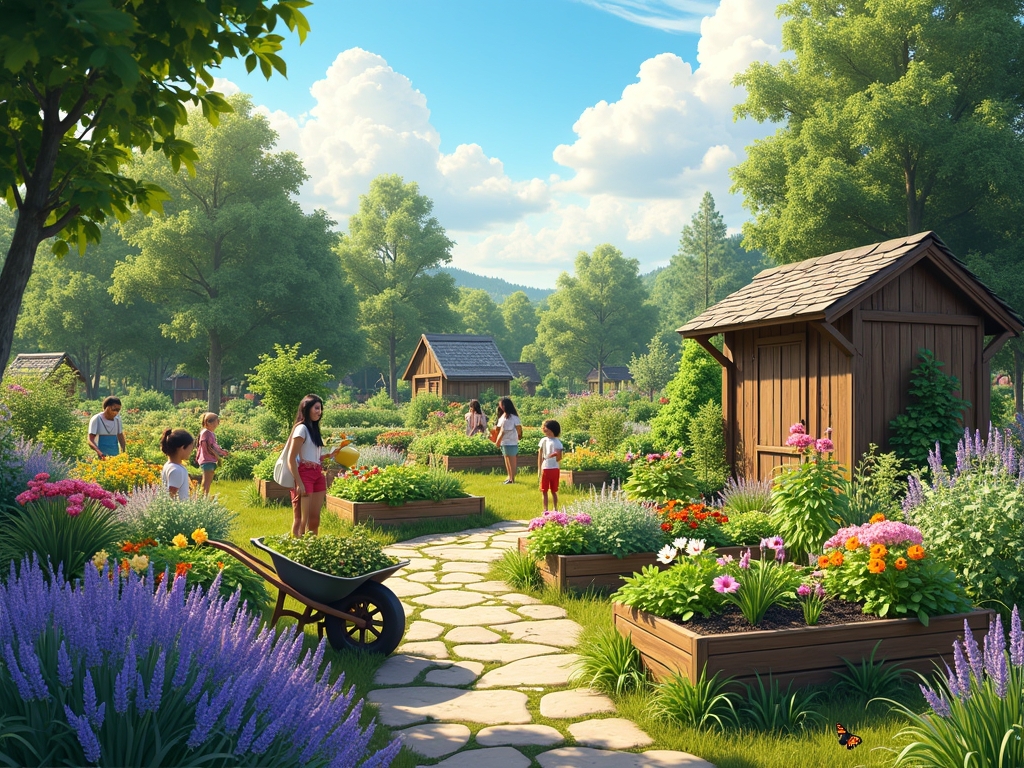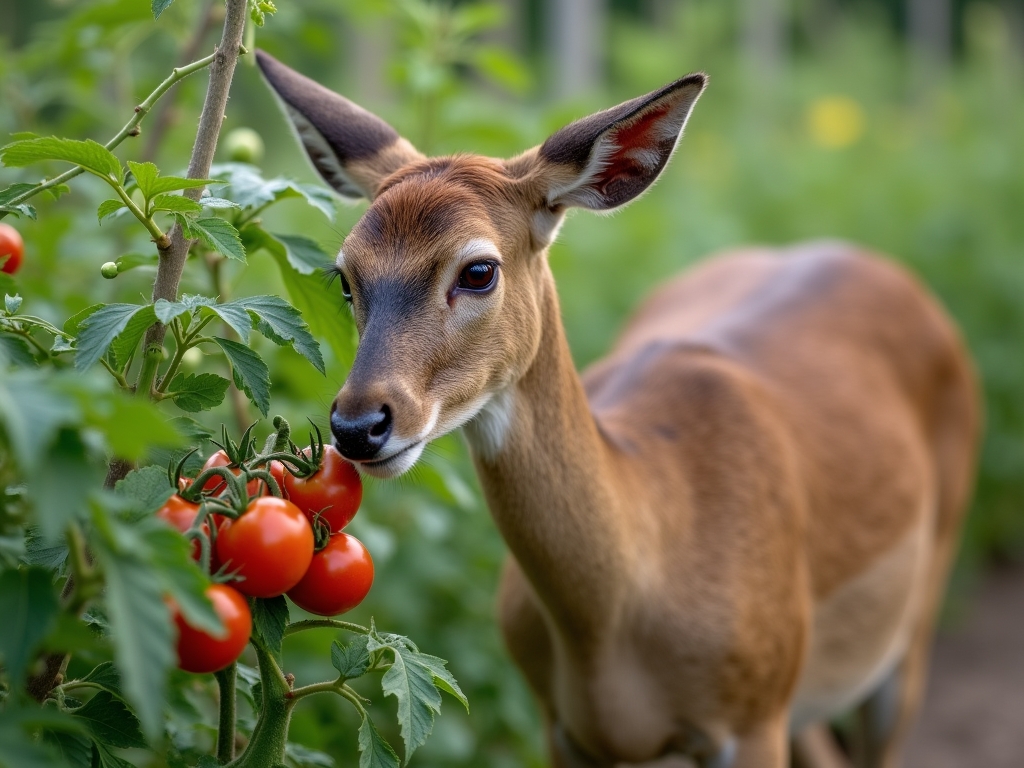A Natural Connection to Nutrition and Family Wellbeing 💚
Home-grown vegetables or fresh-from-the-garden produce offer proven nutritional benefits that supermarket produce often lacks. Growing your own fruits and vegetables brings diversity, enhanced nutrition, and superior homegrown flavor to your table.
Home-Grown Vegetables: Superior Nutritional Value 🥬
Commercial produce has some significant drawbacks:
- Modern varieties are developed for high yields and fast growth
- Flavor and nutrients are often compromised
- Many modern varieties contain fewer nutrients than those from decades ago
- Research comparing USDA data from 1950 to 2024 showed a significant nutrient decline
- Fast-growing plants may not process nutrients as effectively as slower-growing varieties

The Home Garden Advantage 🌿
When you grow your vegetables, you have complete control over variety selection. Heirloom varieties, passed down through generations, often provide superior flavor and higher nutrient content.
Soil Quality and Nutrient Content 🌎
Key factors affecting home-grown vegetables nutrition include:
- Healthy, nutrient-rich soil improves nutritional value
- Garden soil needs regular replenishment of nutrients
- Depleted soil produces depleted crops
- Soil pH levels affect nutrient availability
- While pH doesn’t change nutrient presence, it affects plant absorption
- Improper pH can prevent plants from utilizing added fertilizers
Fresh From Garden to Table 🥗
The immediacy of home gardens provides significant benefits:
- Minimal time between harvest and consumption
- Maximum retention of nutrients
- Superior freshness compared to store-bought produce
Family and Community Benefits 👨👩👧👦
Home-grown vegetables offer multiple advantages:
- Enhanced food security, especially in areas with high poverty
- Access to healthier and tastier food options
- Cost savings
- Increased outdoor exposure and activity
Educational Opportunities 📚
For children, gardening provides remarkable benefits:
- Supports physical, cognitive, and motor development
- Improves literacy through learning plant names and processes
- Builds social capital and connections
- Creates stronger bonds between participants
- Offers quality time between parents and children
Mental Health and Wellbeing 🧠
Home-grown vegetables contribute to psychological wellness in several ways:
- Establish a strong connection between gardening and mental well-being
- Create time capsules of memories through familiar landscapes and plants
- Allow for personal expression and creativity
Cooking Connection 🥘
Home cooking with home-grown vegetables provides multiple benefits:
- Contributes to family health
- Supports environmental sustainability
- Strengthens community bonds
- Improves financial wellbeing
Environmental Impact 🌍
Growing your own food has significant environmental benefits:
- Reduces carbon emissions associated with industrial food production
- Helps combat 25% of global carbon emissions caused by worldwide industrial food production
- Prevents land clearing for monoculture crops
- Maintains natural carbon absorption and distribution
- Reduces fossil fuel consumption in transportation
- Minimizes the need for synthetic fertilizers
Social Benefits and Sharing 💝
Home gardening creates valuable social connections:
- Builds networks with families in the community
- Increases opportunities for inspiration
- Encourages sharing and reciprocity
- Strengthens social relationships and trust
Teaching Future Generations 🌱
The impact on children is particularly meaningful:
- Strengthens connections through plant exchange and sharing
- Creates gifts with longevity and purpose
- Provides sustained benefits through fruits and vegetables
- Fosters long-term appreciation for giving and gardening
Practical Tips for Getting Started 🌿
- Soil Preparation
- Test the soil every two to three years
- Amend according to test recommendations
- Use cover crops to restore nutrients
- Practice integrated pest management
- Maintain natural balance for enhanced growth
- Harvest Timing
- Wait for peak ripeness
- Maximize vitamin content through proper timing
- Handle produce gently to prevent bruising
- Storage and Processing
- Use fresh, raw produce when possible for maximum nutrition
- Consider the impact of processing methods
- Be aware that water-soluble vitamins (B and C) can be lost in cooking
- Monitor heat and cold exposure for fat-soluble vitamins (A and E)

Creating a Sustainable System ♻️
Success in home gardening requires:
- Understanding the connection between food production and consumption
- Learning about growing conditions and nutritional impacts
- Developing efficient and cost-effective methods
Community Impact 🤝
Home gardens often become community focal points:
- Create spaces for sharing stories
- Slow down the pace of life
- Connect people from different backgrounds and ages
Health Benefits Summary 💪
- Physical Health
- Fresh, nutrient-rich produce
- Increased physical activity
- Better dietary choices
- Enhanced immune system support
- Mental Health
- Stress reduction
- Increased mindfulness
- Sense of accomplishment
- Connection to nature
- Family Health
- Shared activities
- Educational opportunities
- Quality time together
- Healthy eating habits
Future Outlook 🔮
The success of home-grown vegetables programs shows that:
- Participants report improved family health
- Good social support leads to sustainable results
- The activity transforms from a solitary task to a rewarding community effort
- Benefits extend to future generations
Conclusion 🌟
Growing vegetables and cooking at home represent more than just food production—it’s an investment in health, family, and community. The benefits extend far beyond the dinner table, impacting physical health, mental wellbeing, environmental sustainability, and social connections. Families can build stronger bonds, develop healthier habits, and contribute to a more sustainable future by embracing home-grown vegetables and home cooking.
Remember: Every seed planted and every meal cooked at home is a step toward better health and stronger family connections. Start small, grow gradually, and enjoy the journey to a healthier, more connected lifestyle through home-grown vegetables and home cooking! 🌱
Take the time to plan your home garden by considering different vegetable space, sunlight, and water requirements. Get your family involved in gardening to foster teamwork and shared responsibility. Experiment with new recipes using your home-grown produce to explore different flavors and expand your culinary skills. Share your surplus vegetables with neighbors and friends to strengthen community bonds and spread the benefits of home gardening. Remember that the journey to a healthier, more connected lifestyle starts with a single seed planted in your home garden.
Warning: Check your city code for regulations regarding home gardens.
We were burned in a suburb and had to destroy all our eggplants and tomato plants!!!!! They were not as “per-code”—crazy, right?
Check your local city code or municipal website for any rules about starting or maintaining home-grown vegetables garden. This could include restrictions on what you can plant, where you can plant it, using certain fertilizers, composting rules, or even limits on garden structures like greenhouses or fences.
Local governments frequently have codes or ordinances that regulate residential gardening to maintain neighborhood aesthetics, safety, and environmental quality. These regulations may cover:
- Permitted Plant Types: Some cities restrict planting invasive species, tall plants, or certain trees close to property lines.
- Garden Placement: Setbacks from property lines, sidewalks, and utility easements are common. Front yard gardens are sometimes subject to different rules from backyards.
- Composting: Codes may specify what can be composted, the location of compost bins, and measures to prevent odors or pests.
- Water Use: You might find guidelines around irrigation systems, rain barrels, or water conservation.
- Accessory Structures: Fences, trellises, hoop houses, or greenhouses often require permits or must adhere to height and placement requirements.
- Wildlife and Pollinator Considerations: Certain practices to support local wildlife may be encouraged or restricted.
- Pesticides and Fertilizers: Environmental codes could limit chemicals that impact local watersheds.
How to Check Your City Code:
- Visit Your City’s Official Website: Look for sections like “Permitting & Inspections,” “Building Codes,” or “Environmental Services”—each often contains local codes and ordinances.
- Use the Search Feature: Enter keywords like “
home garden regulations” or “residential gardening ordinances.“ - Contact City Departments: If you can’t find the information online, call or email your city’s planning, code enforcement, or environmental office for clarification.
- Attend Public Workshops: Cities often hold workshops for community input on local planning, which may discuss guidelines affecting home gardens.
Example Table of Possible Regulations:
| Regulation Type | Common Requirement | Where to Find Info |
|---|---|---|
| Plant Height Limits | Max height for front yard plants | City code or zoning ordinances |
| Composting Rules | Location and material restrictions | Environmental/Health Dept.. site |
| Structure Permits | Permit for greenhouses, fences, etc. | Permitting & Inspections section |
| Watering Restrictions | Irrigation hours and drought bans | Public utilities or water department site |
Always review your city code before starting your home garden, as regulations can affect what you plant, where, and how you maintain your garden. Local ordinances are updated periodically, so check for the latest guidance to avoid costly mistakes or surprises.
The other option is to join a community garden, but be present often, as grifters always enjoy free veggies.

What Are Community Gardens?
Shared plots of land where individuals can rent space for home-grown vegetables. These urban oases offer a fantastic alternative for those without home garden space – just keep your green thumb and watchful eye active! 🌱
Why Community Gardens Rock:
- Built-in gardening community and knowledge sharing
- Access to shared tools and resources
- Perfect for apartment dwellers
- Often cheaper than maintaining a home garden
- Great way to meet fellow plant enthusiasts
- Bonus: Free gardening tips from experienced neighbors!
The Not-So-Fun Reality Check:
- Garden Grifters come in various forms (been there, done that):
- The “Casual Harvester” who “mistakes” your home-grown vegetables for community property
- The “Sampling Specialist” who taste-tests everything
- The “Midnight Gardener” who raids plots after dark
- The “Share Bear” who believes sharing is caring (without asking)
Protection Strategies:
- Mark Your Territory:
- Use distinct plant markers
- Install small decorative fencing – if permitted…
- Add personalized signs – if permitted…
- Take photos of your plot regularly
- Time Your Harvests:
- Check your plot frequently
- Harvest produce as soon as it’s ready
- Don’t wait for that “perfect” ripeness
- Build Community:
- Get to know your garden neighbors
- Participate in garden events
- Join the garden committee
- Create a plot-sitting network
Recommended Visit Schedule (our experience):
| Frequency | Purpose |
|---|---|
| 2-3x week | Basic maintenance |
| Daily | During peak growing season |
| Morning/Evening | Best watering times |
| After storms | Check for damage |
Creative Deterrent Ideas:
- Plant less obvious varieties (purple tomatoes instead of red)
- Surround valuable crops with companion plants
- Create natural barriers with tall plants
- Use motion-activated sprinklers (hilarious and effective!) – if permitted…
Building Garden Karma:
- Share surplus produce willingly
- Contribute to community areas
- Help maintain common spaces
- Organize garden events
Remember: While losing produce to vegetable vigilantes is frustrating, maintain your sense of humor! After all, you’re not just having home-grown vegetables – you’re growing a community (and possibly some interesting stories about the Great Tomato Caper of 2025! 🍅).
Community gardens offer fantastic opportunities for urban gardening but require regular presence and creative protection strategies. Success comes from combining active participation, smart plot management, and a healthy dose of community spirit – with just a splash of vigilance to keep those sneaky snackers at bay! 🌿

Finally… do like we did… move to the countryside, it’s easier to home-grown vegetables, but then you have to work around Mother Nature:
- Deers,
- Squirrels (when it’s dry and hot… guess where they get water from? Nope, not the kitchen, not from the bird bath… from your tomatoes lol),
- Rabbits (little efficient mowing monsters lol),
- Raccoons,
- Chipmunks,
- Bobcats (try to weed your garden with one of these cats watching you lol)
- Cayotes
- Birds
- …

Leave a Reply